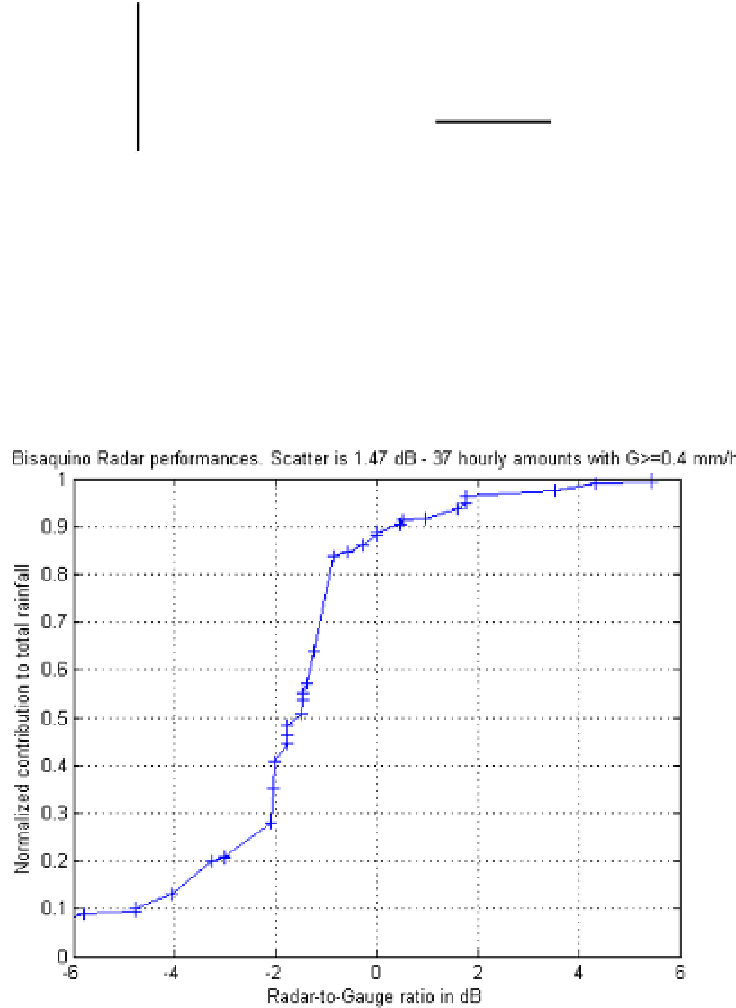Geoscience Reference
In-Depth Information
Out of 96 analyzed hours, in 37 (34) cases the Gauge (Radar) derived hourly rainfall amount
was larger than 0.4 mm/h (see the next Sec. 4.3.1 and Table 3 for more details).
4.3.1 Wet versus dry hours discrimination
From Table 3, it is easy to see that in this case the POD is (29/37) 0.78 while the FAR is
relatively high: (5/34) 0.15. If we consider scores that deal with all the elements of the table,
then
HSS
results to be
0.710
while HK is quite similar: 0.699.
G 0.4
mm/h
G < 0.4
mm/h
R 0.4 mm/h 29 5 34
R < 0.4 mm/h 8
54
62
37 59 96
Table 3. Contingency table between the Bisacquino radar observations and the Giuliana rain
gauge measurements during the 96-hour observation period.
4.3.2 Quantitative agreement between gauge and radar-derived hourly rain rates
During the 37 “Wet-Gauge hours”, the total rainfall amount according to the Giuliana
Gauge was 97.4 mm. According to the Palermo Radar, the total rainfall amount was 74.6
mm, which means a residual “Wet-Gauge Mean Field Bias” of 1.2 dB (radar
underestimation). Based on these 37 “
Wet-Gauge
” hourly amounts, the
Scatter
results to be
1.47 dB
. (as can be seen in Fig. 12). Such 37 Radar-Gauge data pairs are shown in Fig. 13.
Fig. 12. As for Fig. 8, but for the 37 samples (G 0.4 mm/h) of the Giuliana rain gauge.












